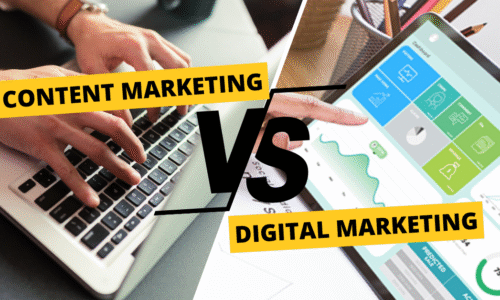Ecommerce Content Marketing: Complete 2025 Guide

If you run an online store and want to drive traffic, build trust, and increase sales—ecommerce content marketing is your best friend. This guide will walk you through what it is, how to build a strategy, examples, and tips to get started, even if you’re new to digital marketing. Learn how to turn visitors into loyal customers using high-quality content.
What Is Content Marketing in Ecommerce?
Content marketing in ecommerce is the practice of creating useful content—such as blog posts, videos, guides, and product stories—to attract, inform, and convert shoppers. Unlike direct ads, this approach focuses on building trust over time by providing value rather than making a hard sell.
It helps:
- Increase organic search visibility
- Educate potential buyers
- Lower cart abandonment
- Boost customer loyalty
According to Content Marketing Institute, 71% of ecommerce brands saw increased ROI from content-focused strategies compared to product ads.
Why Ecommerce Content Marketing Matters in 2025
In 2025, shoppers are more informed than ever. They expect answers before they buy. This section shows why content is essential today.
Reasons why it matters:
- Search intent is changing – Google now prefers helpful, E-E-A-T-aligned content
- Buyers research before purchasing – 80% of buyers read content before purchasing (Think with Google)
- Better than paid ads in long-term ROI
- Content builds brand trust and loyalty
If your brand isn’t publishing content, you’re missing out on traffic and conversions.
Ecommerce Content Marketing Strategy (Step-by-Step)
Here’s how to build a strong ecommerce content strategy from scratch.
Step 1: Define Your Target Audience
Start by identifying your ideal customers:
- Age, gender, location
- Shopping habits
- Pain points and needs
Use tools like Google Analytics, Meta Audience Insights, or even customer surveys.
Step 2: Choose Content Types That Match Buyer Intent
Plan content for every stage of the customer journey:
| Funnel Stage | Content Type |
| Awareness | Blog posts, videos, infographics |
| Consideration | Buying guides, comparison posts |
| Decision | Product pages, testimonials, FAQs |
| Loyalty | Post-purchase emails, how-to videos |
Step 3: Do Keyword Research for Ecommerce
Use tools like Ubersuggest, SEMrush, or Ahrefs to find what people are searching for.
Look for:
- Long-tail product-related terms
- Question-based keywords (e.g., “best running shoes for flat feet”)
- High purchase-intent terms (e.g., “buy LED ring light UK”)
Create content around these to improve visibility and drive relevant traffic.
Step 4: Create a Content Calendar
Plan 1–4 pieces of content per month. Use tools like:
- Trello or Notion for planning
- Google Sheets for tracking
- Assign content topics to campaigns or product launches
Step 5: Repurpose & Promote Content
Once published, don’t let content sit.
Promote via:
- Social media
- Email newsletters
- Product packaging (QR codes linking to guides)
- Influencer collaborations
Also, repurpose: turn blogs into videos or carousels.
Ecommerce Content Marketing Examples
Seeing real-life examples can help you understand what works.
1. Beardbrand – How-To Guides
Beardbrand, a grooming company, publishes how-to articles like “How to Grow a Beard Faster” that drive SEO traffic and introduce users to their products.
2. Glossier – Product Tutorials on YouTube
Beauty brand Glossier uses video tutorials and real customer reviews to showcase how products work—building trust and improving sales.
3. Gymshark – Instagram Reels and Community Content
Gymshark’s short-form videos and UGC (user-generated content) create engagement and brand advocacy without pushing hard sales.
How to Write Ecommerce Content That Converts
Now that you know what to create, here’s how to write ecommerce content that connects.
1. Use Simple Language
Keep it easy to understand. Avoid jargon. Write as if you’re helping a friend shop better.
2. Focus on Benefits, Not Just Features
Example: Instead of “100% cotton shirt,” write “Soft, breathable fabric to keep you cool all day.”
3. Add Visuals and Clear CTAs
Use:
- Product photos
- Videos
- Buttons like “Learn More” or “Shop Now”
4. Optimise for SEO and Mobile
Make sure content is mobile-friendly and includes keywords naturally in:
- Headings
- Meta descriptions
- Image alt texts
Should You Hire an Ecommerce Content Agency?
If you’re short on time or team support, a content agency can help.
Benefits:
- Professional content creation
- Consistent publishing
- SEO optimization
- Brand storytelling
Downsides:
- Can be expensive
- Less personal unless you’re involved
If you’re scaling, hiring an ecommerce marketing agency can boost growth and free up your time.
Final Thoughts on Ecommerce Content Marketing
Ecommerce content marketing is no longer optional—it’s essential for standing out in 2025. Whether you’re selling handcrafted items or tech gadgets, the right content can drive traffic, build trust, and convert browsers into buyers.
Start with a simple content plan, focus on helpful messaging, and stay consistent. Over time, the returns will speak for themselves.



